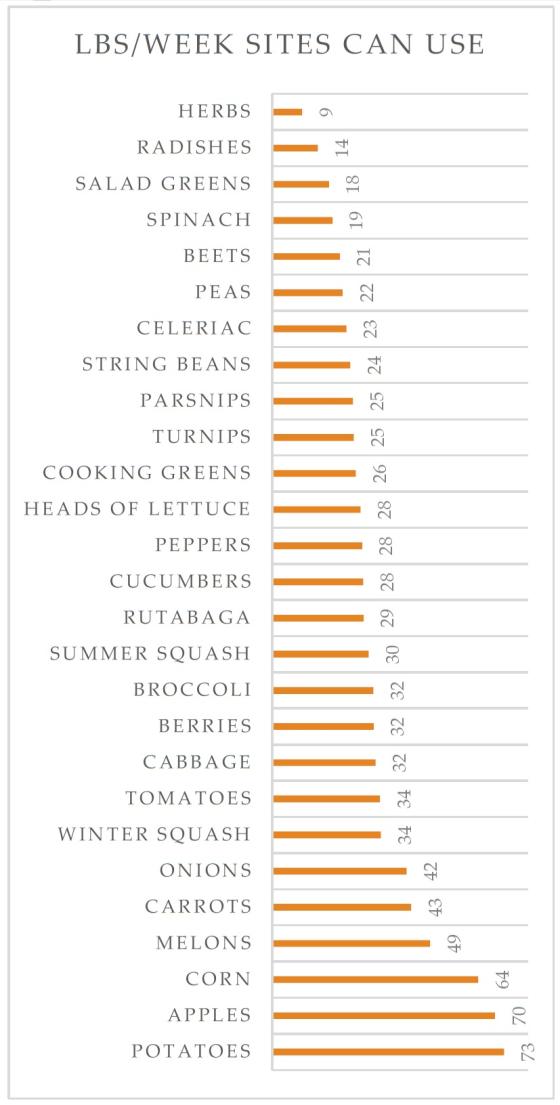Posted December 9, 2016 at 10:19am by Marcella Houghton
New Report Shows High Demand for Fresh Produce in Vermont Food Programs

Pictured: A table from the Fresh Produce Needs Report illustrating the wide variety of produce needed within Vermont’s food programs.
Morrisville, VT, Dec 9, 2016. A recent study by Salvation Farms measures the demand for fresh produce within Vermont food or meal programs and teases out preferences and challenges regarding the sourcing and use of fruits and vegetables. The Morrisville-based nonprofit, which helps programs get locally-grown crops that otherwise can’t find a market, surveyed hundreds of organizations in the spring of 2016 to identify sites’ needs.
A total of 210 organizations across all Vermont counties responded to the Fresh Produce Needs survey. Sites expressed interest in using a wide variety of fresh produce. The majority prefer Vermont-grown food, though in practice only a minority actually use food grown in the state.
With responses from over half of Vermont’s food shelves and a fifth of the state’s public schools, the report estimates that statewide, these two types of sites together have a need for more than 14 million pounds of fresh produce annually. Other types of organizations that responded included prisons, Meals on Wheels programs, and housing sites, so the annual demand statewide is likely much higher.
Salvation Farms’ Fresh Produce Needs report follows their Food Loss on Vermont Farms Study, which found an average estimate of 14.3 million pounds of vegetables and berries go unsold and uneaten on Vermont farms each year. This food loss occurs for reasons that include a lack of market demand and crops that have blemishes or don’t look perfect.
This most recent report released by Salvation Farms sheds light on the opportunities to address both sides of the supply and demand equation. Sites reported that there is a higher preference for “perfect looking” produce. Theresa Snow, Salvation Farms’ Executive Director says, “this fact, when coupled with the infrastructure and labor limitations reported by sites, provide our organization and other social entrepreneurs in Vermont an opportunity to explore creating new market niches and processed products that make it easier for food sites to use wholesome crops that currently remain on farms and uneaten.”
For more information or to read the Fresh Produce Needs Across Vermont report, visit www.salvationfarms.org
